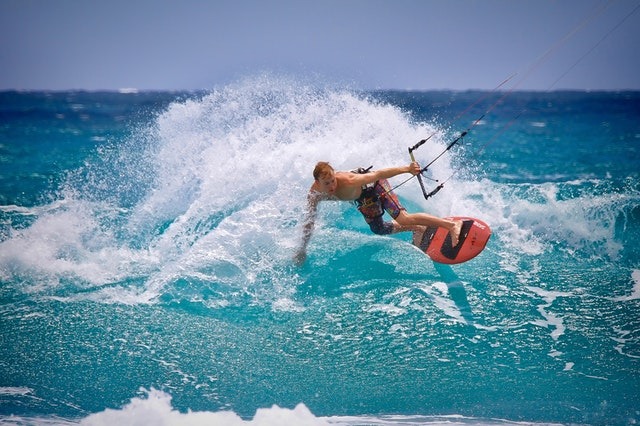Kitesurfing is an extreme sport that involves riding a large power kite. The sport can be done on a water or land surface and can also be done on snow. It combines aspects of surfing, windsurfing, skateboarding, snowboarding, and wakeboarding. It is fast-paced and incredibly exciting. Anyone who’s tried it will be able to tell you that it’s fun.
Table of Contents
The proper way to get Upwind
The first lesson in kitesurfing is the proper way to get upwind. The wind should be on the side and onshore so that the kiter is pushed back. Similarly, the wind must be on your side or onshore to allow the rider to get upwind. This technique is similar to climbing a mountain and requires zigzags instead of straight up. It’s a great way to learn the art of riding a kite. Always buy the right and quality equipment’s only like, surfboards, surf sails, and anything related to surfing.
Easier to Carrying
The kitesurfing board is short enough to fit in a backpack, making it easier to carry around than other equipment. A board measuring about 120 to 150cm can also be used. The kite itself is relatively cheap and easy to transport. The sport is free and doesn’t require any special skills. It’s best to get out in the water as often as you can. But be aware that the waves are unpredictable.
Importance of Wind in Kitesurfing
The wind is often underrated by mere mortals. But to a kitesurfer, it’s the wind that drives the sport. A whistle of a breeze or the sway of the wind can be inspiring! As the winds are so powerful, kitesurfers often wonder where the wind comes from. The wind is also often quite cold – so you must be prepared for it. It’s important to be prepared to be in the water if the temperature drops.
The wind is vital for kitesurfing. Ideally, the wind will be between 12 and 25 knots. Stronger winds, though, can be dangerous. You should be aware of the wind’s direction before you start kitesurfing. Depending on the wind direction, the kite may be pushed back to the ground by the wind. This is similar to climbing a mountain. The harder the wind, the more difficult it is.
The wind is an important factor in kitesurfing. It is a popular sport that’s easy to learn and take with you. A good kitesurfer should be able to sail upwind in a good wind. However, if the wind is too light, the wind-dummy may not be able to sail upwind. Then, the zenith, the spot directly above the head of the kiter, is a neutral position for a sailor. A Hindenburg, on the other hand, can cause a harrowing crash.
Choose the right Board
The first step in learning to kitesurf is to choose the right board. Many people choose to learn kitesurfing on a twin-tip board because it allows them to travel in either direction. Other types of boards require the rider to jibe to turn. The twin-tip boards are the most popular. When you learn to master both types of boards, you’ll be able to perform both of them with ease.
The entire body is used for kitesurfing. The legs control the board and push against the power of the kite while the torso and arms hold on to the kite. In the water, the harness takes over the power of the kite, making it easier for beginners to have fun without getting tired. If you want to take your first steps in learning to kitesurf, it’s recommended to have a friend or two who’s experienced in the sport.
The best way to learn to kitesurf is to take a course with a qualified instructor. This will help you to progress safely and quickly. A three-day course will ensure that you learn to ride a kiteboard and get a feel for the sport. This will also prevent you from developing bad habits or losing your balance mid-air. A professional kitesurfing instructor will be able to correct mistakes and make sure you don’t fall off your board. The sport is closely linked to the weather. It requires constant knowledge of weather forecasts and the sky’s conditions. While some locations are more stable than others, it is still helpful to know the type of weather and how it will affect your kiteboarding. If you’re planning to try kitesurfing in windy conditions, it’s a good idea to practice some basic training before heading out. While it’s not necessary to have a surfboard, it will help you get the hang of the sport.

